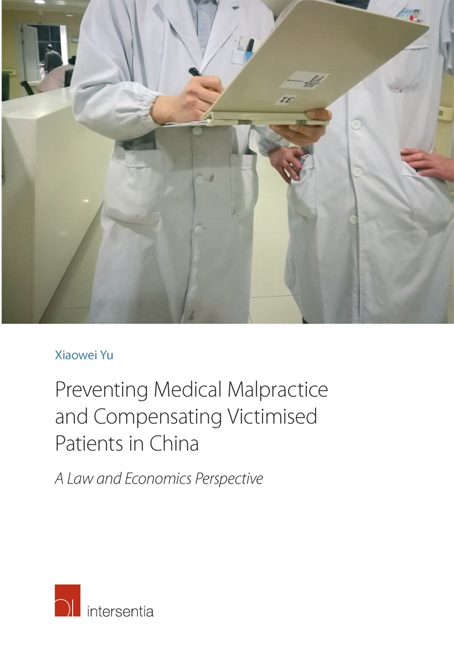 Preventing Medical Malpractice and Compensating Victimised Patients in China
Preventing Medical Malpractice and Compensating Victimised Patients in China Book contents
- Frontmatter
- Acknowledgements
- Contents
- Abbreviations
- List of Figures and Tables
- Chapter 1 Introduction
- Part I Legal Remedies for Medical Malpractice in China
- Introductory Note
- Chapter 2 Health Care Provision and Regulation
- Chapter 3 Compensation for Iatrogenic Injuries under Tort Law
- Chapter 4 Medical Disputes, Iatrogenic Injury, Malpractice Litigation, and Patient Compensation: Empirical Evidence
- Chapter 5 Other Compensation Schemes
- Chapter 6 A Doctrinal Evaluation and Tentative Conclusions
- Part II Economic Theories and Empirical Evidence
- Part III Applying the Economic Observations to China
- Summary
- Bibliography
- Appendix 1 Legislation
- Appendix 2 Cases
- Appendix 3 Semi-Structured Interviews
- Valorisation Addendum
- Curriculum Vitae
Chapter 2 - Health Care Provision and Regulation
from Part I - Legal Remedies for Medical Malpractice in China
Published online by Cambridge University Press: 29 September 2018
- Frontmatter
- Acknowledgements
- Contents
- Abbreviations
- List of Figures and Tables
- Chapter 1 Introduction
- Part I Legal Remedies for Medical Malpractice in China
- Introductory Note
- Chapter 2 Health Care Provision and Regulation
- Chapter 3 Compensation for Iatrogenic Injuries under Tort Law
- Chapter 4 Medical Disputes, Iatrogenic Injury, Malpractice Litigation, and Patient Compensation: Empirical Evidence
- Chapter 5 Other Compensation Schemes
- Chapter 6 A Doctrinal Evaluation and Tentative Conclusions
- Part II Economic Theories and Empirical Evidence
- Part III Applying the Economic Observations to China
- Summary
- Bibliography
- Appendix 1 Legislation
- Appendix 2 Cases
- Appendix 3 Semi-Structured Interviews
- Valorisation Addendum
- Curriculum Vitae
Summary
INTRODUCTION
This chapter is intended to answer part of the first main research question. Specifically, it attempts to answer how the medical profession is regulated as far as the prevention of medical malpractice or quality assurance is concerned (Sub-question (1-a)). However, in order to answer this question better, it is helpful to draw the outline of how health care services are provided and financed in China in the first place. Hence, this Chapter is organised as follows. Section 2 will provide an overview of the current health care providers in the Chinese health care system. Then, Section 3 will address the financing of the health care provision, touching upon both public and private health insurance. Thereafter, Section 4 will describe the regulation of the quality of care, including currently applicable professional standards and regulatory enforcement mechanisms.
THE MEDICAL PROFESSION
INTRODUCTION
The government of China has a constitutional duty to develop a system to provide health care to Chinese citizens. This duty is provided in the current Chinese Constitution as follows:
The state develops medical and health services, promotes modern medicine and traditional Chinese medicine, encourages and supports the setting up of various medical and health facilities by the rural economic collectives, state enterprises and institutions and neighbourhood organisations, and promotes health and sanitation activities of a mass character, all for the protection of the people's health.
The task of directly providing health care to citizens is undertaken by various institutional and individual health care providers. Section 2.2 will give a brief account of the classification of medical and health institutions. Section 2.3 will outline the scope of individual providers.
INSTITUTIONAL PROVIDERS
In China, institutional providers are broadly described as medical and health institutions (医疗卫生机构), which generally refer to any licensed or registered undertakings that provide medical care, disease prevention or health inspection services or conduct medical research or on-the-job training.
Regarding their functions, medical and health institutions can be divided into four groups: (1) hospitals, (2) health care institutions at the grassroot level, (3) specialised public health institutions, and (4) other medical and health institutions. City-based hospitals are primarily intended to provide secondary and tertiary care to all patients. Grass-root-level care institutions are developed only to provide primary care to rural or community-based patients.
- Type
- Chapter
- Information
- Preventing Medical Malpractice and Compensating Victimised Patients in ChinaA Law and Economics Perspective, pp. 25 - 64Publisher: IntersentiaPrint publication year: 2017


